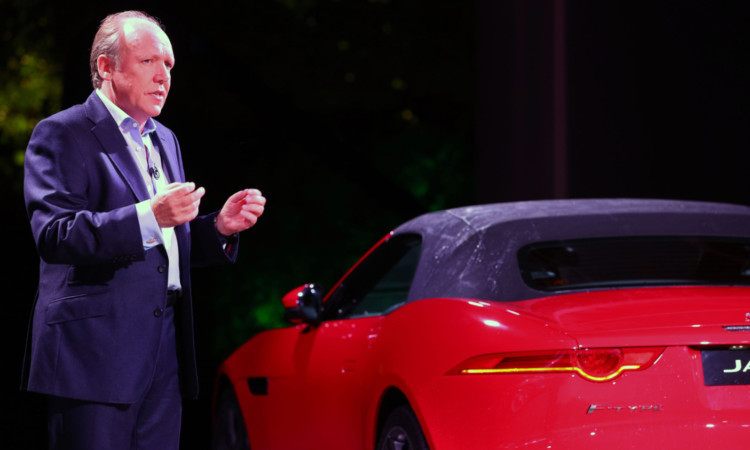Jaguar’s Scottish head of design Ian Callum created the successor to the E-Type. This week he gives a lecture as part of the V&A at Dundee’s series of talks with top designers. He told Jack McKeown why good design matters.
When Ian Callum was 13 he sent some sketches of cars he’d drawn to Jaguar’s chief designer and received an encouraging letter in reply.
Fast forward not quite half a century and that once earnest 13-year-old is now Jaguar’s 59-year-old head of design, and one of the most celebrated car designers in the world.
He is also the man who designed the F-Type, the successor to the E-Type considered by many to be the most beautiful car ever made.
The Dumfries native will be returning to his home country on Tuesday to give a talk.
Ian Callum A Life of Design is part of a series of talks by some of the world’s leading designers being held in the run up to the V&A at Dundee opening in 2017.
“I feel very fortunate to be part of these talks in the build-up to the V&A,” he says. “I’m very aware of the project. I haven’t lived in Scotland for a long time but it’s been on my radar for a while.
“I think it’s very good that Dundee was chosen for it. It’s probably a slightly offbeat choice but, from a design point of view, that’s what makes it interesting. Having it with the sweep of the river behind it will work fantastically well.”
After spending his childhood years in Dumfries, Ian (58) studied industrial design at Glasgow University then won a scholarship from Ford to study for an MA in automotive design at the Royal College of Art in London.
Despite gaining a prestigious scholarship, the first years of his career were not filled with glitz and glamour.
“When I worked at Ford I was at the very bottom of the pile and I spent the first few years designing a lot of steering wheels, wing mirrors and switches,” he continues.
“It was hugely frustrating. Now, I give my young designers whole cars to work on. I don’t want anyone going through the same depressing process I did.”
Things came to a head when he left to set up his own design business. This proved to be a masterstroke. Ian was soon commissioned to design the car that would catapult him to fame in the industry: the Aston Martin DB7.
Further Aston Martins followed, as well as a variety of much bigger and more prestigious design projects from his old employers at Ford.
In 1999 Callum was appointed to succeed the late Geoff Lawson as design director at Jaguar. When he arrived the company was in the doldrums.
Not bold enough to innovate, the company was sticking rigidly to its tried and tested formula and churning out cars that were increasingly old fashioned and irrelevant.
Ian changed all that, coming up with a series of cars, including the XK and XF, that were distinctively Jaguars but were also cutting edge and modern.
He says good design should be more widespread than it is. “Within the car industry design is obviously very well established and recognised, and talent is rewarded,” he says.
“That is the same in architecture as well. Good or bad design can go a long way towards determining the success or failure of a building.
“But within industry and large sectors of business, there isn’t nearly enough focus being put on design.”
Ian thinks the word design needs to be reclaimed for the masses.
“Design is seen as an almost elitist word. It shouldn’t be, it’s just a verb that means to do something well.
“Good design should be a fundamental part of anything that’s created.”
This year has seen Ian back in the spotlight for coming up with Jaguar’s F-Type, four decades after its predecessor the E-Type ceased production.
Coming up with the successor to one of the most iconic cars ever made was a daunting project.
However, the critics have lauded the F-Type and it was recently crowned World Car Design of the Year 2013.
Designing it was a dream come true, Ian says: “Growing up in Dumfries, an E-Type was as good as it got.
“You never saw a Ferrari or anything like that there. For me the E-Type was the ultimate, the absolute pinnacle.
“If you’d told me then that I would one day get to design its successor I think I would have fainted.”
